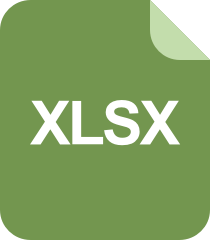动态股票推荐的实用机器学习方法。IEEETrustCom2018。_Jupyter Notebook_Python_下载.zip

2.虚拟产品一经售出概不退款(资源遇到问题,请及时私信上传者)
在本项目中,"动态股票推荐的实用机器学习方法。IEEETrustCom2018。_Jupyter Notebook_Python_下载.zip" 提供了一个利用机器学习进行股票推荐的研究实例,这是在2018年IEEE TrustCom会议上发表的成果。Jupyter Notebook是数据科学家常用的交互式开发环境,它允许我们将代码、解释和可视化结果集成到一个文档中,便于理解和分享。Python作为主要编程语言,因其强大的数据处理和科学计算库(如Pandas、NumPy和Scikit-learn)而被广泛用于金融领域。 1. **动态股票推荐**:股票推荐系统基于实时市场数据,运用统计和预测模型,为投资者提供买入或卖出的建议。动态性意味着模型会根据市场的最新变化不断更新和调整预测。 2. **机器学习基础**:机器学习是人工智能的一个分支,通过分析大量数据来构建预测模型。在这个项目中,可能使用了监督学习(如线性回归、决策树、随机森林或支持向量机)或无监督学习(如聚类分析)来预测股票价格或走势。 3. **数据预处理**:在应用任何机器学习算法之前,数据通常需要清洗和转换。这包括处理缺失值、异常值,以及对数据进行归一化或标准化,以便不同特征在同一尺度上比较。 4. **特征工程**:在股票推荐中,特征可能包括历史股价、交易量、市盈率、公司财务指标、行业动态等。特征选择和构造对于模型的性能至关重要。 5. **模型训练与评估**:使用历史数据训练模型,然后使用交叉验证来评估其性能。常见的评估指标有准确率、精确率、召回率、F1分数以及回测中的收益指标,如夏普比率、信息比率等。 6. **Jupyter Notebook**:在Notebook中,研究人员可以清晰地展示数据导入、预处理、模型训练、结果可视化等步骤,使得其他研究者能轻松复现实验。 7. **Python库应用**:Pandas用于数据读取和清洗,NumPy处理数值计算,Matplotlib和Seaborn用于数据可视化,Scikit-learn则提供了各种机器学习算法的实现。 8. **模型优化**:可能涉及到参数调优(如网格搜索、随机搜索),或者使用集成学习(如梯度提升机、随机森林)提高预测性能。 9. **实时预测**:项目可能还涵盖了如何将训练好的模型部署到实时系统中,以应对快速变化的股市数据。 10. **风险控制**:除了预测,机器学习模型还需要考虑风险因素,如波动性、市场情绪和投资者偏好,以提供更稳健的推荐。 这个项目涉及了从数据获取、预处理、特征工程、机器学习模型构建、模型评估到实际应用的全过程,对于理解如何在金融领域应用机器学习具有很高的参考价值。
 动态股票推荐的实用机器学习方法。IEEETrustCom2018。_Jupyter Notebook_Python_下载.zip (52个子文件)
动态股票推荐的实用机器学习方法。IEEETrustCom2018。_Jupyter Notebook_Python_下载.zip (52个子文件)  Machine-Learning-for-Stock-Recommendation-IEEE-2018-master
Machine-Learning-for-Stock-Recommendation-IEEE-2018-master  .DS_Store 6KB
.DS_Store 6KB .gitattributes 66B
.gitattributes 66B fundamental_portfolio.ipynb 32KB
fundamental_portfolio.ipynb 32KB figs
figs  efficient1.jpg 212KB
efficient1.jpg 212KB chart1_datasetPeriod.PNG 24KB
chart1_datasetPeriod.PNG 24KB chart3_modelError.PNG 26KB
chart3_modelError.PNG 26KB chart10_insample.PNG 8KB
chart10_insample.PNG 8KB chart8_PnL.png 87KB
chart8_PnL.png 87KB chart9_TotalValue.png 83KB
chart9_TotalValue.png 83KB rolling_windows.vsdx 89KB
rolling_windows.vsdx 89KB dataperiod.png 80KB
dataperiod.png 80KB chart2_rolling_windows.PNG 62KB
chart2_rolling_windows.PNG 62KB chart4_predictedReturn2.PNG 26KB
chart4_predictedReturn2.PNG 26KB chart6_selectedStocks.PNG 28KB
chart6_selectedStocks.PNG 28KB transaction cost.PNG 24KB
transaction cost.PNG 24KB chart11_overallPerformance.PNG 23KB
chart11_overallPerformance.PNG 23KB chart5_coefficient.PNG 34KB
chart5_coefficient.PNG 34KB chart7_efficient1.PNG 93KB
chart7_efficient1.PNG 93KB pnl1.jpg 269KB
pnl1.jpg 269KB chart4_predictedReturn1.PNG 26KB
chart4_predictedReturn1.PNG 26KB fundamental_run_model.py 4KB
fundamental_run_model.py 4KB fundamental_back_testing.ipynb 180KB
fundamental_back_testing.ipynb 180KB README.md 6KB
README.md 6KB code
code  .DS_Store 6KB
.DS_Store 6KB old_Rcode
old_Rcode  .DS_Store 6KB
.DS_Store 6KB fundamental_ML_model.R 7KB
fundamental_ML_model.R 7KB fundamental_select_stock.R 740B
fundamental_select_stock.R 740B fundamental_run_model.R 11KB
fundamental_run_model.R 11KB ml_model.py 26KB
ml_model.py 26KB Data
Data  stocks_weight_table.xlsx 476KB
stocks_weight_table.xlsx 476KB all_return_table.pickle 87.58MB
all_return_table.pickle 87.58MB all_stocks_info.pickle 307KB
all_stocks_info.pickle 307KB fundamental_final_table.xlsx 19.06MB
fundamental_final_table.xlsx 19.06MB 2-portfolio_data
2-portfolio_data  .DS_Store 6KB
.DS_Store 6KB stocks_selected_total_user8.csv 318KB
stocks_selected_total_user8.csv 318KB equally_weighted_user8.xlsx 319KB
equally_weighted_user8.xlsx 319KB minimum_weighted_user8.xlsx 343KB
minimum_weighted_user8.xlsx 343KB mean_weighted_user8.xlsx 341KB
mean_weighted_user8.xlsx 341KB 1-sp500_adj_price.csv.zip 42.36MB
1-sp500_adj_price.csv.zip 42.36MB 1-focasting_data
1-focasting_data  .DS_Store 6KB
.DS_Store 6KB sector50_clean.xlsx 299KB
sector50_clean.xlsx 299KB sector35_clean.xlsx 1.71MB
sector35_clean.xlsx 1.71MB sector55_clean.xlsx 1.01MB
sector55_clean.xlsx 1.01MB sector10_clean.xlsx 1.35MB
sector10_clean.xlsx 1.35MB sector20_clean.xlsx 1.91MB
sector20_clean.xlsx 1.91MB sector25_clean.xlsx 2.45MB
sector25_clean.xlsx 2.45MB sector15_clean.xlsx 1.32MB
sector15_clean.xlsx 1.32MB sector60_clean.xlsx 544KB
sector60_clean.xlsx 544KB sector40_clean.xlsx 1.35MB
sector40_clean.xlsx 1.35MB sector45_clean.xlsx 2.66MB
sector45_clean.xlsx 2.66MB sector30_clean.xlsx 1.22MB
sector30_clean.xlsx 1.22MB 1-spx_price.xlsx 105KB
1-spx_price.xlsx 105KB- 1

- 粉丝: 1w+
- 资源: 9149
 我的内容管理
展开
我的内容管理
展开
 我的资源
快来上传第一个资源
我的资源
快来上传第一个资源
 我的收益 登录查看自己的收益
我的收益 登录查看自己的收益 我的积分
登录查看自己的积分
我的积分
登录查看自己的积分
 我的C币
登录后查看C币余额
我的C币
登录后查看C币余额
 我的收藏
我的收藏  我的下载
我的下载  下载帮助
下载帮助

 前往需求广场,查看用户热搜
前往需求广场,查看用户热搜最新资源
- GitBook 教授 Javascript 编程基础知识.zip
- Generation.org 开发的 JAVA 模块练习.zip
- FastDFS Java 客户端 SDK.zip
- etcd java 客户端.zip
- Esercizi di informatica!执行计划,metti alla prova!.zip
- Eloquent JavaScript 翻译 - 2ª edição .zip
- Eclipse Paho Java MQTT 客户端库 Paho 是一个 Eclipse IoT 项目 .zip
- disconf 的 Java 应用程序.zip
- cloud.google.com 上使用的 Java 和 Kotlin 代码示例.zip
- 未命名3(3).cpp


 信息提交成功
信息提交成功